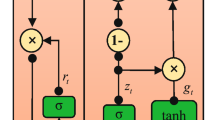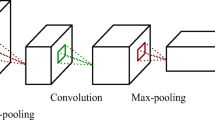Abstract
In practical applications, it is difficult to acquire sufficient fault samples for training deep learning fault diagnosis model of rolling bearing. Aiming at the few-shot issue and multi-label attributes of single-point faults, a novel fault diagnosis method of rolling bearing based on time–frequency signature matrix (T–FSM) feature and multi-label convolutional neural network with meta-learning (MLCML) is proposed in this paper. At the beginning, the T–FSM features sensitive to few-shot fault diagnosis of measured vibration signal are extracted. Subsequently, a designed multi-label convolutional neural network (MLCNN) with a specific architecture is employed to identify faults. Crucially, the meta-learning strategy of learning initial network parameters susceptive to task changes is incorporated to MLCNN for addressing the few-shot problem. Ultimately, the publicly available rolling bearing dataset is utilized to demonstrate the effectiveness of the proposed method. The experimental results exhibit that the trained MLCML has the capability of learning to learn few-shot fault attributes with outstanding diagnosis accuracy and generalization. More concretely, the model can adapt to new fault categories rapidly owing to that only a few samples and update steps are required to fine-tune the network.











Similar content being viewed by others
References
Zhao M, Lin J (2018) Health assessment of rotating machinery using a rotary encoder. IEEE Trans Ind Electron 65(3):2548–2556. https://doi.org/10.1109/tie.2017.2739689
Ma M, Sun C, Chen XF (2018) Deep coupling autoencoder for fault diagnosis with multimodal sensory data. IEEE Trans Ind Inf 14(3):1137–1145. https://doi.org/10.1109/tii.2018.2793246
Shao HD, Jiang HK, Li XQ, Wu SP (2018) Intelligent fault diagnosis of rolling bearing using deep wavelet auto-encoder with extreme learning machine. Knowl Based Syst 140:1–14. https://doi.org/10.1016/j.knosys.2017.10.024
Bo L, Liu XF, Xu GJ (2020) Intelligent diagnostics for bearing faults based on integrated interaction of nonlinear features. IEEE Trans Ind Inf 16(2):1111–1119. https://doi.org/10.1109/tii.2019.2943507
Wang YJ, Sun FM, Li XH (2020) Compound dimensionality reduction based multi-dynamic kernel principal component analysis monitoring method for batch process with large-scale data sets. J Intell Fuzzy Syst 38(1):471–480. https://doi.org/10.3233/jifs-179421
Wang YJ, Sun FM, Li B (2018) Multiscale neighborhood normalization-based multiple dynamic PCA monitoring method for batch processes with frequent operations. IEEE Trans Autom Sci Eng 15(3):1053–1064. https://doi.org/10.1109/tase.2017.2713800
Wang X, Qin Y, Wang Y, Xiang S, Chen H (2019) ReLTanh: an activation function with vanishing gradient resistance for SAE-based DNNs and its application to rotating machinery fault diagnosis. Neurocomputing 363:88–98. https://doi.org/10.1016/j.neucom.2019.07.017
Liu J (2020) A dynamic modelling method of a rotor-roller bearing-housing system with a localized fault including the additional excitation zone. J Sound Vib. https://doi.org/10.1016/j.jsv.2019.115144
Lei Y, Yang B, Jiang X, Jia F, Li N, Nandi AK (2020) Applications of machine learning to machine fault diagnosis: a review and roadmap. Mech Syst Signal Process. https://doi.org/10.1016/j.ymssp.2019.106587
Udmale SS, Singh SK (2020) A mechanical data analysis using kurtogram and extreme learning machine. Neural Comput Appl 32(8):3789–3801. https://doi.org/10.1007/s00521-019-04398-0
Liu R, Yang B, Zio E, Chen X (2018) Artificial intelligence for fault diagnosis of rotating machinery: a review. Mech Syst Signal Process 108:33–47. https://doi.org/10.1016/j.ymssp.2018.02.016
Jia F, Lei Y, Lin J, Zhou X, Lu N (2016) Deep neural networks: a promising tool for fault characteristic mining and intelligent diagnosis of rotating machinery with massive data. Mech Syst Signal Process 72–73:303–315. https://doi.org/10.1016/j.ymssp.2015.10.025
Lu C, Wang Z-Y, Qin W-L, Ma J (2017) Fault diagnosis of rotary machinery components using a stacked denoising autoencoder-based health state identification. Sig Process 130:377–388. https://doi.org/10.1016/j.sigpro.2016.07.028
Wen L, Li X, Gao L, Zhang Y (2018) A new convolutional neural network-based data-driven fault diagnosis method. IEEE Trans Ind Electron 65(7):5990–5998. https://doi.org/10.1109/tie.2017.2774777
Huang W, Cheng J, Yang Y, Guo G (2019) An improved deep convolutional neural network with multi-scale information for bearing fault diagnosis. Neurocomputing 359:77–92. https://doi.org/10.1016/j.neucom.2019.05.052
Zhao X, Jia M (2019) A new local-global deep neural network and its application in rotating machinery fault diagnosis. Neurocomputing 366:215–233. https://doi.org/10.1016/j.neucom.2019.08.010
Li S, Cao H, Yang Y (2018) Data-driven simultaneous fault diagnosis for solid oxide fuel cell system using multi-label pattern identification. J Power Sources 378:646–659. https://doi.org/10.1016/j.jpowsour.2018.01.015
Liang P, Deng C, Wu J, Yang Z, Zhu J, Zhang Z (2019) Compound fault diagnosis of gearboxes via multi-label convolutional neural network and wavelet transform. Comput Ind. https://doi.org/10.1016/j.compind.2019.103132
Wang WG, Shen JB, Shao L (2018) Video salient object detection via fully convolutional networks. IEEE Trans Image Process 27(1):38–49. https://doi.org/10.1109/tip.2017.2754941
George D, Lehrach W, Kansky K, Lazaro-Gredilla M, Laan C, Marthi B, Lou X, Meng Z, Liu Y, Wang H, Lavin A, Phoenix DS (2017) A generative vision model that trains with high data efficiency and breaks text-based CAPTCHAs. Science. https://doi.org/10.1126/science.aag2612
Liu XQ, Zhou FY, Liu J, Jiang LJ (2020) Meta-Learning based prototype-relation network for few-shot classification. Neurocomputing 383:224–234. https://doi.org/10.1016/j.neucom.2019.12.034
Ye HJ, Sheng XR, Zhan DC (2020) Few-shot learning with adaptively initialized task optimizer: a practical meta-learning approach. Mach Learn 109(3):643–664. https://doi.org/10.1007/s10994-019-05838-7
Ren Z, Zhu Y, Yan K, Chen K, Kang W, Yue Y, Gao D (2020) A novel model with the ability of few-shot learning and quick updating for intelligent fault diagnosis. Mech Syst Signal Process. https://doi.org/10.1016/j.ymssp.2019.106608
Li Q, Tang B, Deng L, Wu Y, Wang Y (2020) Deep balanced domain adaptation neural networks for fault diagnosis of planetary gearboxes with limited labeled data. Measurement. https://doi.org/10.1016/j.measurement.2020.107570
Zhang A, Li S, Cui Y, Yang W, Dong R, Hu J (2019) Limited data rolling bearing fault diagnosis with few-shot learning. IEEE Access 7:110895–110904. https://doi.org/10.1109/access.2019.2934233
Zhang CX, Song DJ, Chen YC, Feng XY, Lumezanu C, Cheng W, Ni JC, Zong B, Chen HF, Chawla NV, Aaai (2019) A deep neural network for unsupervised anomaly detection and diagnosis in multivariate time series data. In: Thirty-third AAAI conference on artificial intelligence/thirty-first innovative applications of artificial intelligence conference/ninth AAAI symposium on educational advances in artificial intelligence
Lake BM, Ullman TD, Tenenbaum JB, Gershman SJ (2017) Building machines that learn and think like people. Behav Brain Sci. https://doi.org/10.1017/s0140525x16001837
Bing X (2020) Critical infrastructure protection based on memory-augmented meta-learning framework. Neural Comput Appl. https://doi.org/10.1007/s00521-020-04760-7
Finn C, Pieter A, Sergey L (2017) Model-agnostic meta-learning for fast adaptation of deep networks. In: Paper presented at the in international conference on machine learning (ICML)
Rothe R, Timofte R, Van Gool L (2018) Deep expectation of real and apparent age from a single image without facial landmarks. Int J Comput Vis 126(2–4):144–157. https://doi.org/10.1007/s11263-016-0940-3
Ranjan R, Patel VM, Chellappa R (2019) HyperFace: a deep multi-task learning framework for face detection, landmark localization, pose estimation, and gender recognition. IEEE Trans Pattern Anal Mach Intell 41(1):121–135. https://doi.org/10.1109/tpami.2017.2781233
Pan X, Zhao J (2018) High-resolution remote sensing image classification method based on convolutional neural network and restricted conditional random field. Remote Sens. https://doi.org/10.3390/rs10060920
Girshick R, Donahue J, Darrell T, Malik J (2016) Region-based convolutional networks for accurate object detection and segmentation. IEEE Trans Pattern Anal Mach Intell 38(1):142–158. https://doi.org/10.1109/tpami.2015.2437384
Jing LY, Zhao M, Li P, Xu XQ (2017) A convolutional neural network based feature learning and fault diagnosis method for the condition monitoring of gearbox. Measurement 111:1–10. https://doi.org/10.1016/j.measurement.2017.07.017
Zhang M-L, Zhou Z-H (2014) A review on multi-label learning algorithms. IEEE Trans Knowl Data Eng 26(8):1819–1837. https://doi.org/10.1109/tkde.2013.39
Liu J, Xu ZD, Zhou L, Yu WN, Shao YM (2019) A statistical feature investigation of the spalling propagation assessment for a ball bearing. Mech Mach Theory 131:336–350. https://doi.org/10.1016/j.mechmachtheory.2018.10.007
Yan XA, Jia MP (2018) A novel optimized SVM classification algorithm with multi-domain feature and its application to fault diagnosis of rolling bearing. Neurocomputing 313:47–64. https://doi.org/10.1016/j.neucom.2018.05.002
Tzelepi M, Tefas A (2020) Improving the performance of lightweight CNNs for binary classification using quadratic mutual information regularization. Pattern Recogn. https://doi.org/10.1016/j.patcog.2020.107407
Plaza EG, Lopez PJN (2018) Application of the wavelet packet transform to vibration signals for surface roughness monitoring in CNC turning operations. Mech Syst Signal Process 98:902–919. https://doi.org/10.1016/j.ymssp.2017.05.028
Zhu HP, Cheng JX, Zhang C, Wu J, Shao XY (2020) Stacked pruning sparse denoising autoencoder based intelligent fault diagnosis of rolling bearings. Appl Soft Comput. https://doi.org/10.1016/j.asoc.2019.106060
Acknowledgements
This study was funded by Natural Science Foundation of Beijing Municipality (4202015) and the Postgraduate Research Capacity Improvement Program from Beijing Technology and Business University in 2020.
Author information
Authors and Affiliations
Corresponding author
Ethics declarations
Conflict of interest
The authors declare that they have no financial and personal relationships with other people or organizations that can inappropriately influence their work and there is no professional or other personal interest of any nature or kind in any product, service and/or company that could be construed as influencing the position presented in, or the review of, the manuscript entitled “Multi-Label Fault Diagnosis of Rolling Bearing Based on Meta-Learning.”
Additional information
Publisher's Note
Springer Nature remains neutral with regard to jurisdictional claims in published maps and institutional affiliations.
Rights and permissions
About this article
Cite this article
Yu, C., Ning, Y., Qin, Y. et al. Multi-label fault diagnosis of rolling bearing based on meta-learning. Neural Comput & Applic 33, 5393–5407 (2021). https://doi.org/10.1007/s00521-020-05345-0
Received:
Accepted:
Published:
Issue Date:
DOI: https://doi.org/10.1007/s00521-020-05345-0




